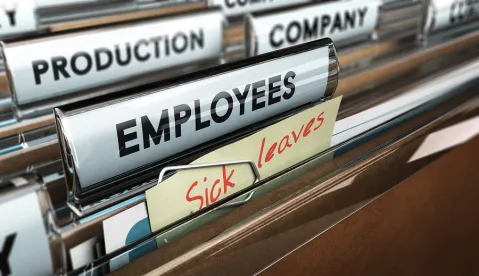Welcome to 2019, readers! With the new year comes certain changes to New York Paid Family Leave (NYPFL), and we want to make sure you are up to date so that any leave requests you may receive under this law are properly addressed.
NYPFL was enacted effective January 1, 2018 as a comprehensive paid family leave program for all employees working in New York. The program was designed to be fully phased in over four years, with changes beginning on January 1, 2019 – meaning that we will see changes to the allotted leave periods, benefit levels, and other components of the statutory scheme this year and for the next three years.
Data on the Use of Paid Family Leave in 2018
NYPFL allows employees to take leave for the birth, adoption, or foster placement of a new child, to care for a family member with a serious health condition, or when a family member is away on active military duty. According to ShelterPoint Life, a disability and paid-family-leave insurance carrier, as of midway through 2018, 27% of its claims for NYPFL benefits in New York were filed by fathers. The data showed that about 17% of the men taking leave used six weeks or more, while 40% of the men used the benefit for less than two weeks or by taking intermittent leave.
We will provide additional updates here as more information becomes available about the use of NYPFL in 2018. In the meantime, here is what you need to know for 2019 . . .
New Updates for 2019
- Available Leave Time Has Increased
The allotted amount of leave that employees are eligible to take has increased from eight (8) weeks to ten (10) weeks. Any requests for leave which are submitted on or after January 1, 2019 will be entitled to 10 weeks if the employee qualifies for NYPFL, even if the qualifying event (such as the birth of a child) occurred in 2018. For example, if an employee is the father of a child who was born in September 2018, and the employee requests NYPFL in February 2019 for leave to be taken in 2019, he will be entitled to ten weeks of leave. The New York State DOL has also clarified in a recently-released FAQ that employees will receive the benefit rate and the amount of leave in effect on the first day of their leave; therefore, an employee who began a leave that carried over into 2019 will only be entitled to the 2018 benefit rate and leave amount. Remember that when fully phased in, NYPFL will provide employees with a total of twelve (12) weeks – but the next increase is not scheduled to occur until 2021, and all requests made in 2019 will be subject to a maximum of ten weeks.
- The Benefit Amount Has Increased
In 2019, employees who take NYPFL will receive 55% (increased from 50% in 2018) of either their average weekly wage or the Statewide Average Weekly Wage (AWW), whichever is greater. The Statewide AWW has increased from $1,305.92 (in 2018) to $1,357.11 in 2019, which means that the maximum weekly benefit for 2019 is $746.41. The benefit amount will continue to increase in future years: in 2020, it will increase to 60% of an employee’s average weekly wage or the Statewide AWW, and in 2021 it will increase to 67% of either the employee’s average weekly wage or the Statewide Average Weekly Wage.
- The Employee Contribution Rate Has Increased
Beginning January 1, 2019, the employee contribution rate also increased from 0.126% to 0.153% of an employee’s gross wages each pay period, capped at the Statewide Average Weekly Wage. This change means that an employee’s maximum annual contribution will increase from $85.56 to $107.97. Employees who earn less that the Statewide Average Weekly Wage will make contributions consistent with their actual wages, which may not total the maximum annual contribution. Employers can start taking deductions at the new rate on January 1, 2019.
- The Definition of “Serious Health Condition” Has Expanded
Governor Cuomo recently signed legislation expanding the law’s definition of “serious health condition” to explicitly include preparation for and recovery from surgery related to organ or tissue donation. Accordingly, employees with family members who have made organ or tissue donations and who require care may be eligible for leave under the law. This expanded definition takes effect on February 3, 2019.
Takeaways and Next Steps
Now that 2019 is here, be sure to:
- Confirm that all team members who deal with requests for NYPFL are aware of these changes;
- Arrange for employee deduction amounts to be increased in keeping with the new contribution rate;
- Consider whether you will send a communication to employees regarding these changes and whether you need to update any written materials such as leave policies and/or handbooks to reflect these changes.




 />i
/>i


